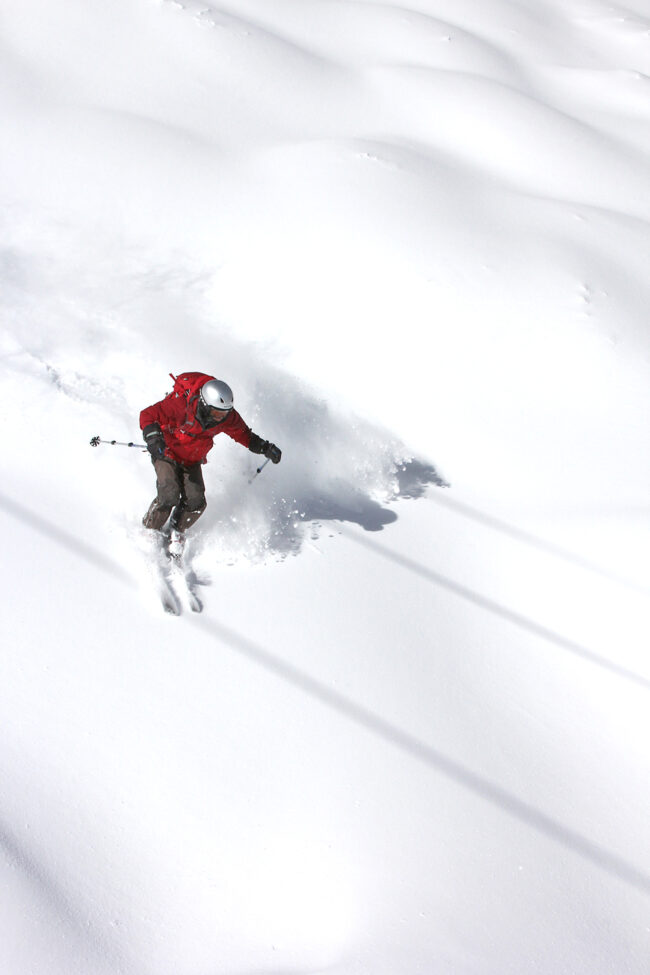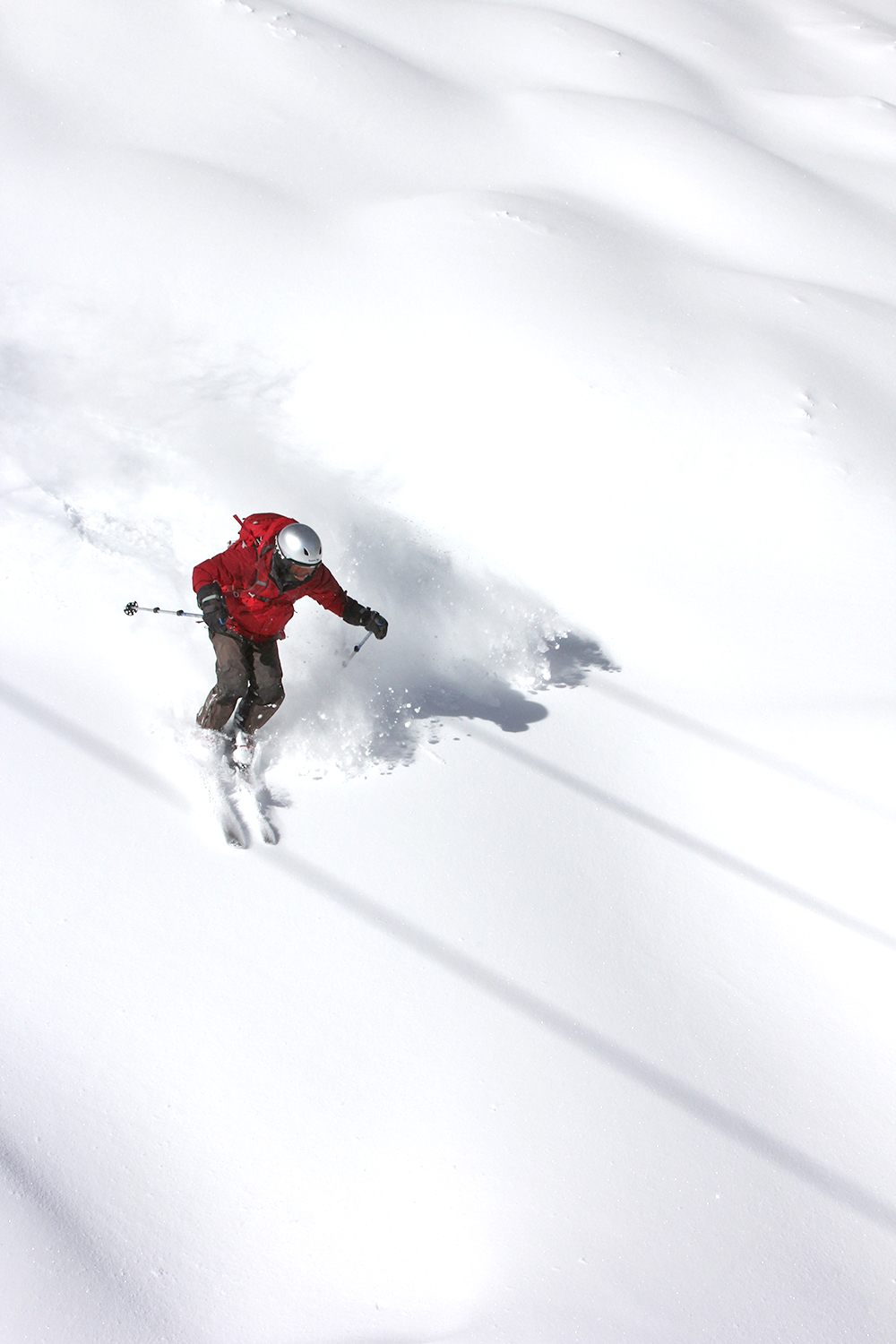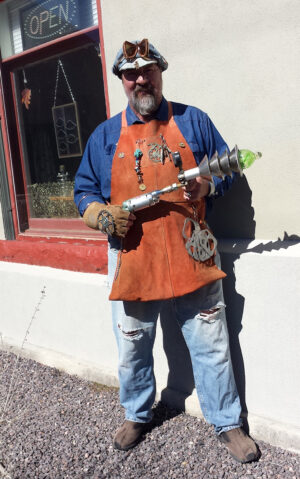THE TELEPHONE RANG MUCH EARLIER than I had expected. “Moeller, get up,” the excited voice blurted. “It snowed 13 inches at Monarch. Let’s get rolling.”
I clambered out of bed, looked out the window and grinned. The Pueblo sky was dumping fat, sloppy flakes the size of pancakes. Moments later Adam sped up to my house and we tossed our ski gear into my Subaru. It was early December, and Monarch Mountain reported a 22-inch base, including the 13 inches of overnight fluff. We belted in, cranked the defroster and headed out to make our first runs of the season.

As we wound through Bighorn Sheep Canyon along the Arkansas River, the snow fell harder and obscured our vision in a white paste that pushed the Subi’s wipers and defroster beyond their limits. We pulled over a few times and scraped the windshield, giggling like teenage girls at a slumber party as we marveled at the glut of snow tumbling in the white atmosphere. The flurry blanketed the windshield as fast as we could remove it. Adam and I locked concerned eyes over the hood of the car. Could we finish the journey in this storm? Should we throw in the towel and head home? Yes to the first question, no to the second, we concluded with a logic twisted to produce a desired result. Onward.
We stopped in Salida for breakfast burritos, coffee and another round of windshield maintenance. Fed and caffeinated, we sprinted the final leg up to Monarch and high-fived in the parking lot. We had made it.
Our resolve paid off until we momentarily abandoned our intelligence. The storm broke and we skied some glorious runs in the morning. But early in the afternoon we decided to ditch the groomed trails and duck into the trees, despite the meager base and the fleeting notion that shin-snapping logs and ski-shredding rocks probably lurked just below the powdery cover. Succumbing to temptation, we descended into a glade shimmering with chaste snow, Adam in the lead, carving one artful turn after another.
Suddenly, out of nowhere, something arrested Adam’s skis and stopped them absolutely dead in their tracks. Adam ejected from the heel bindings and launched into a pike somersault, landing on his back about 10 feet forward of his skis. He lay there, splayed in a tree well, not moving or making a sound. I thought he was dead; I prayed he was only unconscious.
“Adam, talk to me,” I barked as rusty first aid mnemonics learned decades ago raced through my head. Airway, breathing, circulation. “Adam,” I yelled. Not a sound, not a twitch. Still on my skis, I hobbled toward the motionless body. “Adam, you alright? Say something, Bro.” Nothing. I leaned in for a closer look.
Adam wiggled his fingers. “Yeah, I’m all right,” he finally sputtered. I let go a tight breath. “I’m just doing a systems check. Everything seems to be OK.”
With considerable effort Adam rolled onto his stomach and attempted to free himself from the relatively shallow yet challenging tree well. He appeared a bit disoriented and rightly so. This solid, barrel-chested man had just been brutally schooled in the principle of inertia — a body in motion remains in motion until acted upon by an outside source.
I reached out with a ski pole, probed beneath Adam’s skis and immediately determined the outside force. The ski pole struck a boulder buried not two inches below the snow. I marveled at Adam’s skis, perched innocently and so perfectly parallel atop the concealed rock and at the premature end of tracks any accomplished skier would admire. The evidence spoke poetically and undeniably of an abrupt halt. Then my eyes traced the virgin, untrammeled space between the skis and Adam. My mind boggled over the great distance. Now I was becoming disoriented. This man had been certifiably launched.
Adam foundered in the tree well like a belly-up turtle trying to right himself. He struggled, his stubby limbs flailing in a slapstick manner that would have warranted a few chuckles in any other circumstance. A leg sunk in the snow and he toppled over. I nervously looked around for ski patrol. Adam rallied again, finally emerging from the snowy pit and standing on two feet, albeit a bit wobbly. He methodically ran his hands from head to toe, checking himself for injuries. No protruding bones, no oozing blood, no other obvious concerns. I examined his pupils — they appeared symmetrical enough. Adam would ski another day. Relieved, I hoisted one of his skis and flipped it over.
“Ouch,” I said, pointing to a deep and wide but surprisingly short gash in the ski’s base. “This will require some serious repair.”
“No doubt,” Adam mumbled with palatable dejection. “Let’s go get a beer.”
Erik Moeller has worked as an attorney, newspaper reporter, ski lift operator and raft guide. He lives in Pueblo and is an M.A. candidate in creative writing at Western Colorado University. Erik defines success by the number of weekdays he skis.



